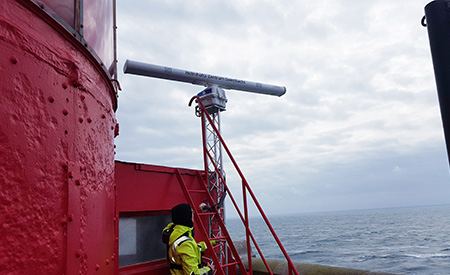Biofouling
Type of resources
Available actions
Topics
INSPIRE themes
Keywords
Contact for the resource
Provided by
Formats
status
-

The objective of the DiMe project was to improve the characterisation of extreme sea states with breaking waves by combining observations and modelling.
-

The objective of the ABIOP project was to develop biofouling characterisation and quantification methods to make the design and maintenance of ORE systems more reliable. ABIOP has identified the research needs that will enable better identification and management of the risks relating to the ORE components most sensitive to biofouling. Initial in situ measurements were also carried out to characterise biocolonisation in the Atlantic and Mediterranean from an engineering and environmental point of view. The necessary additional studies are being carried out within the framework of the ABIOP+ project.
-

This report presents the uncertainties and environmental impact dependencies on array changes. This document includes content about wave and tidal uncertainties as well as environmental issues related to array design
-

The objectives of the DUNES project are on the one hand to understand the sedimentary and ecosystem dynamics of underwater dunes, and on the other hand to provide technology developers and industrialists in the ORE sector with complementary knowledge and approaches to work in environments with hydraulic dunes. The expected results are first of all to have a better knowledge of the physical processes and the natural functioning of hydraulic dunes, to create a free access GIS dedicated to dune fields and sandbanks, to characterize on a fine scale of the structure of food webs in dunes to understand the functioning of these particular systems, and finally to establish methodological recommendations regarding the evaluation of anthropogenic impacts on dune ecosystems.
-

The objective of the PHYSIC project was to develop hydrosedimentary modeling in areas of strong currents through measurement campaigns. PHYSIC made it possible to establish recommendations for the deployment of equipment for the acquisition of field data in areas of strong currents. Databases dealing with sediment transport in the Raz Blanchard have also been set up. They represent valuable tools for those involved in the tidal stream industry.
 Metadata catalogue
Metadata catalogue